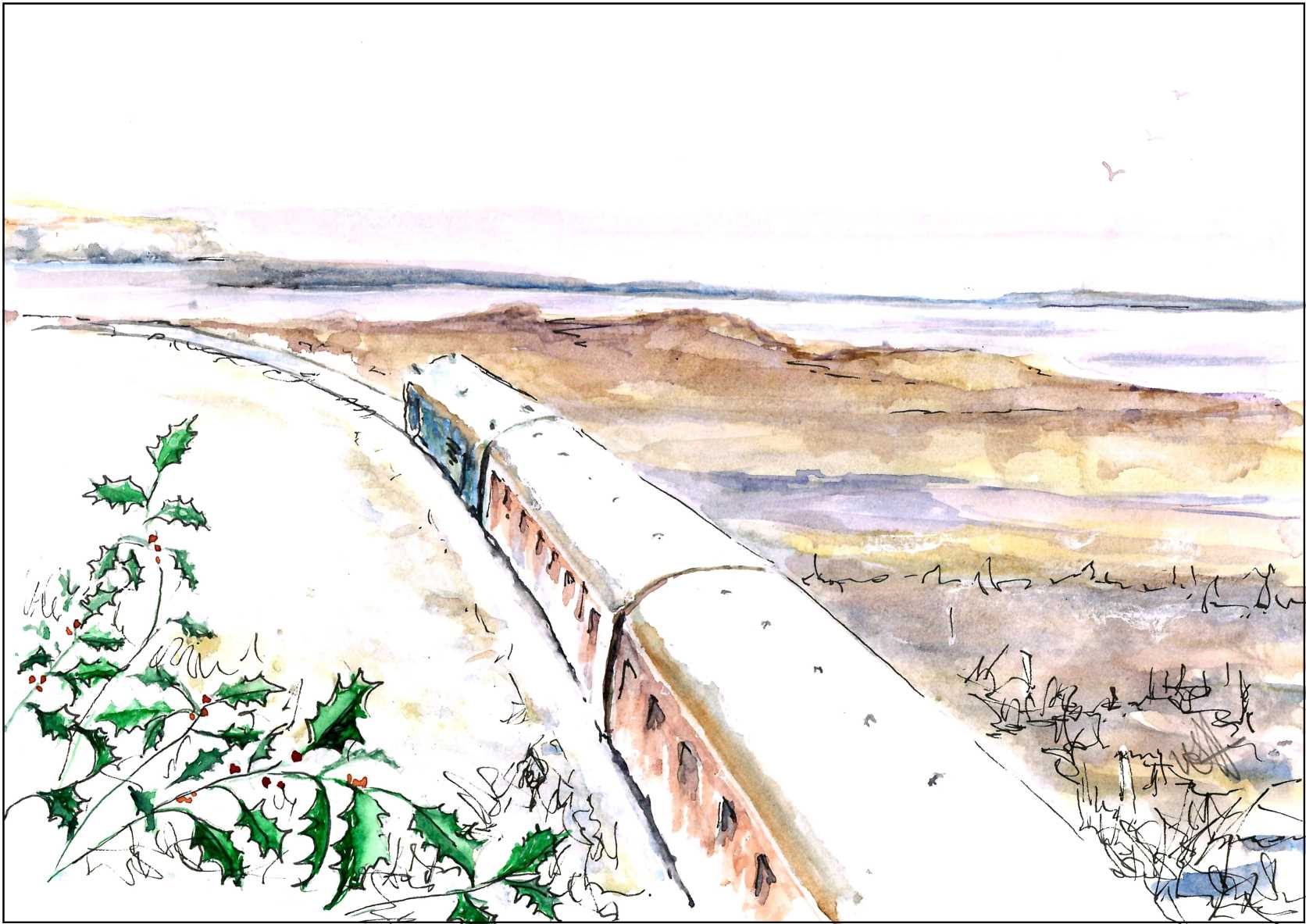Weekly Roundup – 08-Dec-24

Class 33 ‘Crompton’ D6566 (33048) was pictured at Barnstaple Junction, alongside the Bristol to Exeter main line, while working a line inspection special in the aftermath of Storm Darragh on Sunday 8th December 2024. Photo by Tom Courtney © CC BY-NC 3.0
This violence of Storm Darragh was felt by the WSR and the DEPG last Saturday, with debris from eight trees blocking the line and gusting winds causing damage to the doors of the Old Goods Shed at Williton. The railway had rightly decided to suspend all operations on Saturday 7th December because of the high risk of injury from falling objects and flying debris, but the wind reduced as forecast on Sunday, giving hope for the booked workings – subject to a line inspection.
This inspection took the form of Class 33 ‘Crompton’ D6566 (33048) crewed by WSR Diesel Traction Inspector Paul Fleet and the DEPG’s Tom Courtney hauling a brake van with WSR Assistant General Manager Seb Welsh as Guard and WSR Infrastructure Manager Pete Chilcott in charge of six volunteers, all of whom had reported for duty in the early hours to be ready for departure at first light. The ’33’ ran from Bishops Lydeard to Williton at reduced speed, with the infrastructure team clearing the debris as they encountered it, then the loco ran around the brake van within Williton station limits and waited for the incoming ‘Santa Express‘ service that had been given the ‘all clear’ to depart from Bishops Lydeard, thanks to the efforts of the team.

Class 33 ‘Crompton’ D6566 (33048) soon encountered the first blockage as she climbed Watts Bank towards Watersmeet Bridge, one mile north of Bishops Lydeard Station, on Sunday 8th December 2024. Photo by Tom Courtney © CC BY-NC 3.0

Class 33 ‘Crompton’ D6566 (33048) paused on Castle Hill, one mile south of Williton Station, while the team dealt with the seventh line blockage encountered on the 10-mile journey from Bishops Lydeard. Pictured on Sunday 8th December 2024 by Tom Courtney © CC BY-NC 3.0
The ’33’ then ran to the southern extent of the WSR, to Barnstaple Junction alongside the Bristol to Exeter main line, clearing another tree from the line to allow this section of the route to be used later in the day for the ‘Quantock Belle‘ dining train. The Sunday services had been saved !
MANY THANKS TO ALL who had an early start and worked so hard to allow the railway to operate and to delight the children (and adults) on the ‘SANTA EXPRESS‘ !
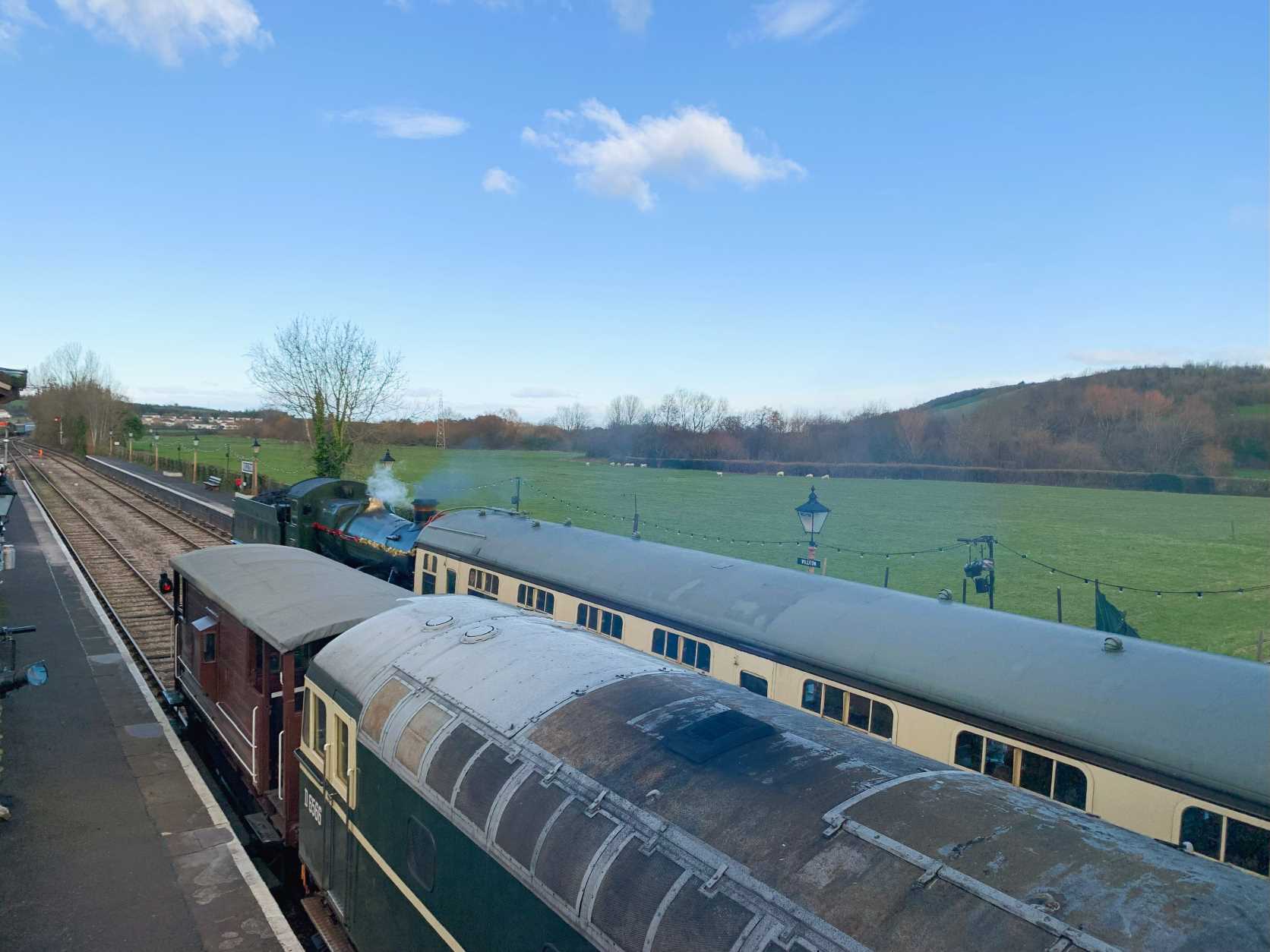
Class 33 ‘Crompton’ D6566 (33048) was waiting at Williton to depart for Norton Fitzwarren when Santa and a trainload of hopeful children arrived behind WSR 2-6-0 ‘Mogul’ 9351. Pictured on Sunday 8th December 2024 by Andy Royal © CC BY-NC 3.0
At Williton, we faced a different issue, where the wind had blown in the doors at the northerly end of the Old Goods Shed and blown one of the west side doors off it’s rails, bringing it crashing down and breaking it into pieces. The small team on site at Williton on Sunday dealt with the clean-up as far as was possible in the strong winds that were still blowing through the building that day, and erected barriers around the broken door while arrangements were being made to deal with it.
Built in 1862 to a standard broad gauge pattern, the future of the Old Goods Shed was already under review as part of the site lease renewal that is being negotiated between the DEPG and the WSR, so we expect to be able to outline a restoration plan some time in 2025 to make the most of this Brunel-designed building.

Many thanks to the volunteers Ben, Neil C and Ian R who helped tidy up the Old Goods Shed at Williton after Storm Darragh blew the northerly doors in and the resultant sudden gust blew one of the loading bay doors off it’s tracks. Pictured on Sunday 8th December 2024 by Andy Royal © CC BY-NC 3.0
Just a reminder, the format of the Christmas services has changed this year, so our diesels will not be rostered for duty, but they will be on standby and available to provide support if needed. Click here or on the image below to review the new WSR Christmas seasonal offerings:
DIESEL RUNNING DATES for 2025
We don’t yet have the details available for 2025 but we understand that the running pattern will be very similar to that of 2024, so the 2024 DIESEL RUNNING DATES page can be used as a guide, temporarily. Good news – the WSR’s SUMMER DIESEL FESTIVAL has been confirmed as being Thursday 5th through Saturday 7th with a Mixed Traction Day on Sunday 8th of June 2025.
Click here to go to our DIESEL RUNNING DATES page
Click here to go to our ONLINE SHOP
Thank you very much for your support !
LOCO NEWS:
Class 52 D1010 ‘WESTERN CAMPAIGNER’ – with no volunteers able to attend on site on Saturday, it has been left to the ‘Transmission Team’ to demonstrate the progress that they have made on the overhaul of the Serck motor from the ‘A’ cooler group. This motor had a failed bearing resulting from water ingress, and required new bearings and a sleeve to be fitted to provide a good smooth surface so that the double row oil seal could do its job. The motor is now ready to be painted and then it can be re-fitted to the cooler group and the fan re-attached. Many thanks to Colin F, Geoff and Tim for getting this overhaul done.

D1010 – the Serck hydraulic motor has been overhauled and is now ready to be painted and then re-installed in the ‘A’ cooler group. Pictured at Williton on 2nd December 2024 by Colin Foxhall © CC BY-NC 3.0

D1010 – the fan is being cleaned up and repainted prior to re-mounting it on the overhauled Serck motor. Pictured at Williton on 30th November 2024 by Andy Royal © CC BY-NC 3.0
The weather raised concerns about the security of D1010’s bodyshell, being on stands at the northern end of the yard. To set everyone’s mind at ease, the loco is fine and has not moved at all, as witnessed by the red paint lines that were sprayed onto the stands by Colin F shortly after the loco body was placed on them.
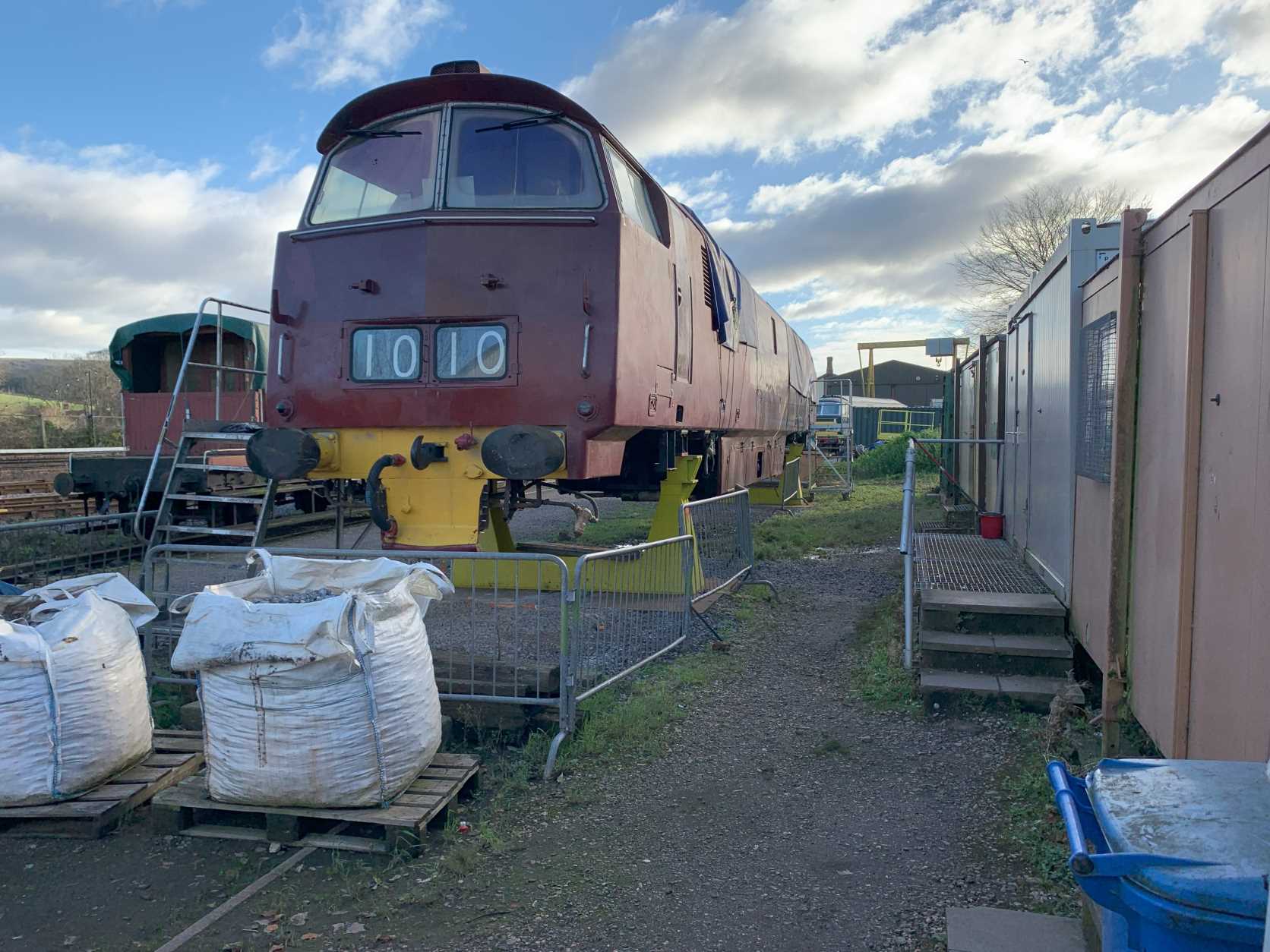
D1010 – the loco body is up on stands in the northern end of the yard at Williton, devoid of engines and transmissions, but still weighing 40 tonnes spread over four support points. Pictured on Sunday 8th December 2024 by Andy Royal © CC BY-NC 3.0
 |
 |
 |
 |
D1010 – each of the four support points carry red paint lines where the loco support column meets the top surface of the stand. These lines were spray painted shortly after the loco was placed on the stands in July 2024 and show that there has been no movement since. Pictured on Sunday 8th December 2024 by Andy Royal © CC BY-NC 3.0
Apologies to those D1010 sponsors who have yet to receive the photos and certificates for the patches that they have sponsored. After ‘almost’ catching up in the Spring, the lifting of the loco and subsequent need to get the bogie overhaul project underway has depleted the resource for the patch engraving and a backlog has built up again, the weather being the latest impediment to progress.
Rest assured that every sponsor will receive their certificate and the details of where to find their sponsored patch. We will be making a further push for funds soon, because we have some big ticket items for refurbishment, including 14 cardan shafts and 32 springs.
MANY THANKS to all who have sponsored and supported the RESTORATION of D1010 !
Class 09 D4107 (09019) – with no volunteers on site last Saturday and other tasks that had to be covered on the Sunday, there has been no change in the status on this project this week. Hopefully, we will pick up the pace again shortly.
Class 33 D6566 (33 048) – as already reported, this loco was in use for line inspection purposes in the aftermath of Storm Darragh. After completion of the inspection, the loco returned to Bishops Lydeard where she resumed the role of duty loco for that end of the line. The ’33’ will be available to support the WSR Christmas services that originate from Bishops Lydeard.
Class 33 D6575 (33 057) – this loco is now back at Williton and is undergoing some planned maintenance, with care being taken to keep her close to readiness in case she is called into action. On Sunday 8th December, volunteers Ben, Neil C and Ian R set about resolving a series of small but annoying oil leaks that have contributed to making a mess in the engine room of the loco. The cause of several of the leaks has been traced to the specially-shaped rubber component that seals the rocker cover around the fuel injection pipework. The photos show that these have become hardened and have cracked, allowing oil to leak past. All eight will be replaced.

Volunteer driver Neil C was hard at work on Class 33 ‘Crompton’ D6575 (33057) at Williton on Sunday 8th December 2024, attending to oil leakage from the rocker covers. Photo by Ben Elvey © CC BY-NC 3.0
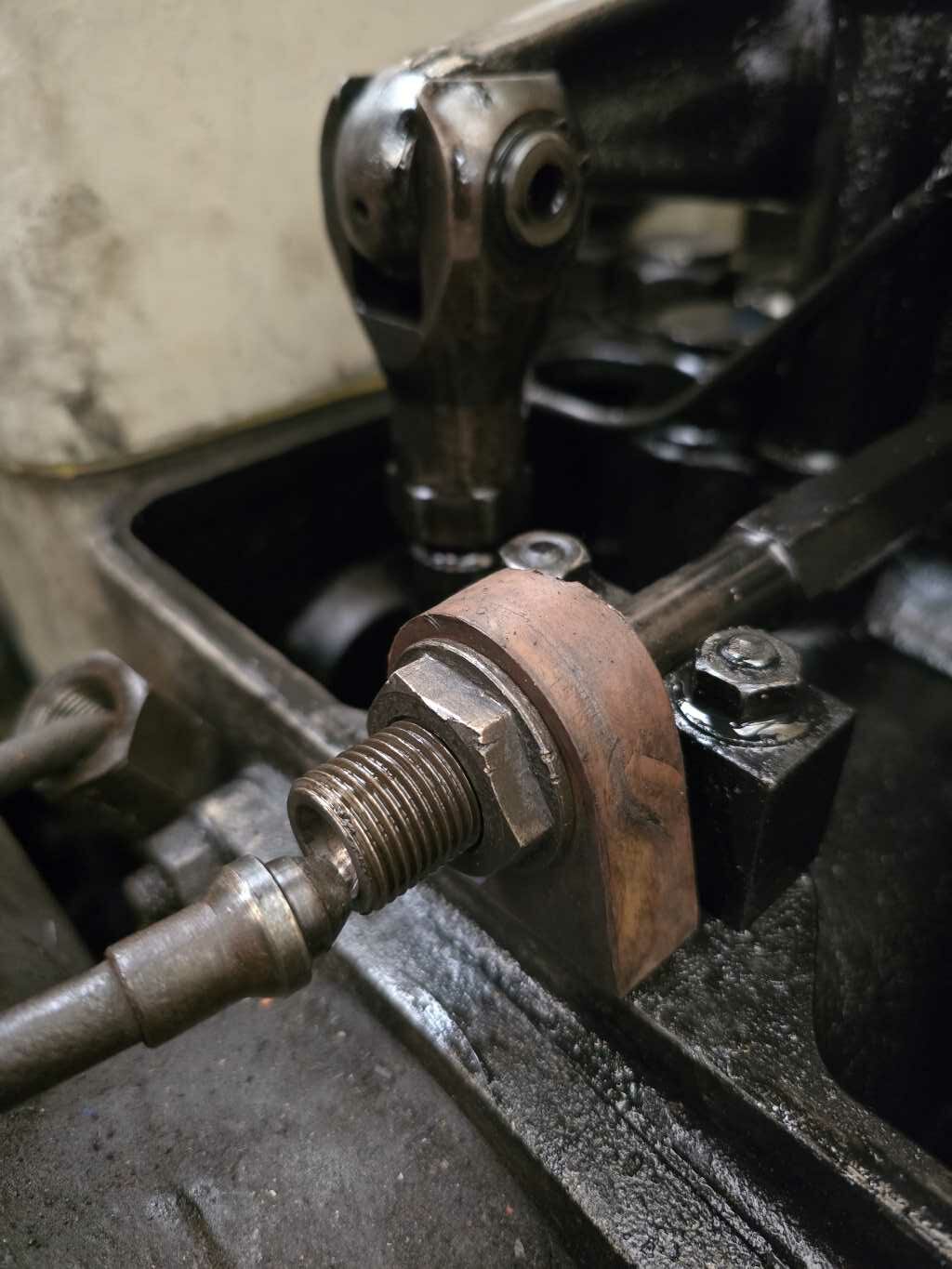
D6575 – one of the specially-shaped rubber sealing components (dark red colour) is visible in this view of a disconnected fuel injection pipe at Williton on Sunday 8th December 2024. Photo by Ben Elvey © CC BY-NC 3.0

D6575 – the deterioration of the rubber is clearly visible in this view at Williton on Sunday 8th December 2024. Photo by Ben Elvey © CC BY-NC 3.0
Class 35 ‘Hymek’ D7017 – after launching a short-term fundraiser on the 1st November 2024, we are delighted to announce that the supporters of this wonderful locomotive have already raised more that £5,000 in five weeks, which takes us halfway to our target of £10,000 so THANK YOU FOR YOUR FANTASTIC SUPPORT !
The fundraiser is short-term because the WORK IS IN PROGRESS, with the WSR engineering team at Minehead having been contracted to do the repairs. This ensures that the loco receives the bodywork corrosion repairs that she needs before a repaint can be carried out. Although the loco looked quite good from a distance, a closer inspection revealed that corrosion is taking place from behind the skin panels, and this will soon result in perforations and rapid deterioration. A stitch in time saves nine, which is why we are getting the work done NOW.
We don’t have any photos to share this week, but we will have some for the next roundup, showing the progress that the full-time engineering team are making as they apply resources to the loco five days per week.
Here’s the basis of our appeal for funds:
As the first locomotive to be saved for preservation by the Diesel & Electric Group (the forerunner of the DEPG) back in 1975, Class 35 ‘Hymek’ D7017 has built up a significant following and is very much loved. This loco has had an excellent year, working public service trains on 10 separate days and achieving 100% availability, although she has started to look rather shabby of late. As D7017 is now approaching her 50th year in preservation, it will be appropriate to have her bodywork overhauled and repainted in time for her 50th anniversary, so arrangements have been made to have the work carried out at the Minehead workshops of the West Somerset Railway.
The work involves a number of areas around the body where corrosion has taken hold from the inside and resulted in perforations of the body panels. The metalwork behind the corroded panels will need to be cut out and replaced, so this is not a quick job. The DEPG’s volunteer welders are tied up on other projects that would be unfairly affected by queue-jumping D7017, so the opportunity was taken to follow-up on an offer from the Minehead team and a repair and repainting contract has been agreed. The work has already started and the loco will be back with us in a matter of months so that other maintenance work can continue at Williton.
We need help raising funds for the work that is about to be carried out. This is a short-term appeal so please give this your attention and help by making a donation via our website (click on the icons below) or by bank app or by sending a cheque to the DEPG at Williton. THANK YOU VERY MUCH !
Class 35 ‘Hymek’ D7018 – the ‘transmission team’ have been making excellent progress with the static testing of the transmission control system as they worked through the agreed test plan. The objective of the plan is to test the functionality of each of the valves in the control block, a total of 30 valves and six actuators, each of which must function in a defined way to ensure the correct outcome. Some of the valves can be tested easily, others depend on multiple factors and their function can only be approximated.
All was going well until the testing of Valve 15. This is the ‘directional interlock’ and generates a ‘standstill pressure signal’ that is used to control other functions such as preventing any attempt at changing direction until the locomotive has come to a complete stop. It also has a secondary function, which is to prevent the selection of a direction other than the one in which the loco is travelling, should the engine be started when the loco is being towed (an unlikely occurrence in preservation, but a function nonetheless).

Internal diagram of Valve 15, the ‘Directional Interlock Valve’
The detection of movement depends on the ‘interlock pump’ which is driven from the output shaft which is directly connected to the loco wheels. Any movement of the loco causes the interlock pump to rotate and create oil pressure in the interlock circuit, which is then detected by the lower chamber of Valve 15.
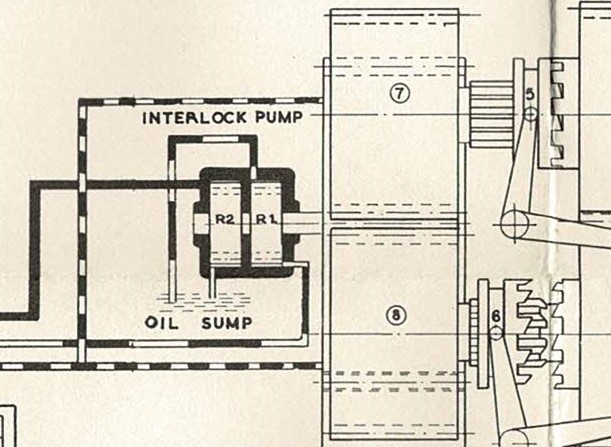
Diagram of the interlock pump that is driven from the output shaft
When the team tested Valve 15, they found that it did not respond to the rotation of the output shaft, which is the simulation of the loco being in movement. Turning the shaft faster resulted in some oil coming through to Valve 15 but mostly air bubbles, signalling that there was an air leak on the suction side of the interlock pump. Reversing the direction of rotation caused the opposite side of the valve to exhibit bubbles, so that showed that both sides of the pump were leaking on the suction side.
As the pump is immersed in oil when in normal operation, the air had to be entering both circuits somewhere above the sump oil level, and one such place would be the mating flange between the transmission housing sections, where a flat gasket seal is held in place by two bolts. These bolts were found to be insufficiently tightened and once the joint had been re-made and re-tightened, the system worked as it should !
This showed the value of static testing, because the fault may not have otherwise been detected until further damage had been done, and the leaking flange would have been inaccessible once the transmission had been put back into the loco.
WELL DONE ‘TEAM TRANSMISSION’ !
On Saturday 14th December, the team will be demonstrating all of the functionality that is possible to test with a fairly simple setup, to gain approval to move to the next test stage, which can only take place when the transmission is back inside the loco, so this will be a major milestone for the project.
Meanwhile, here are some photos of the interlock pump and the flange that caused the issue:

D7018 – the interlock pump is visible in the lower right, with the two pipes that carry the oil in opposite directions, depending on the direction of travel of the locomotive. Pictured at Williton on Monday 2nd December 2024 by Colin Foxhall © CC BY-NC 3.0
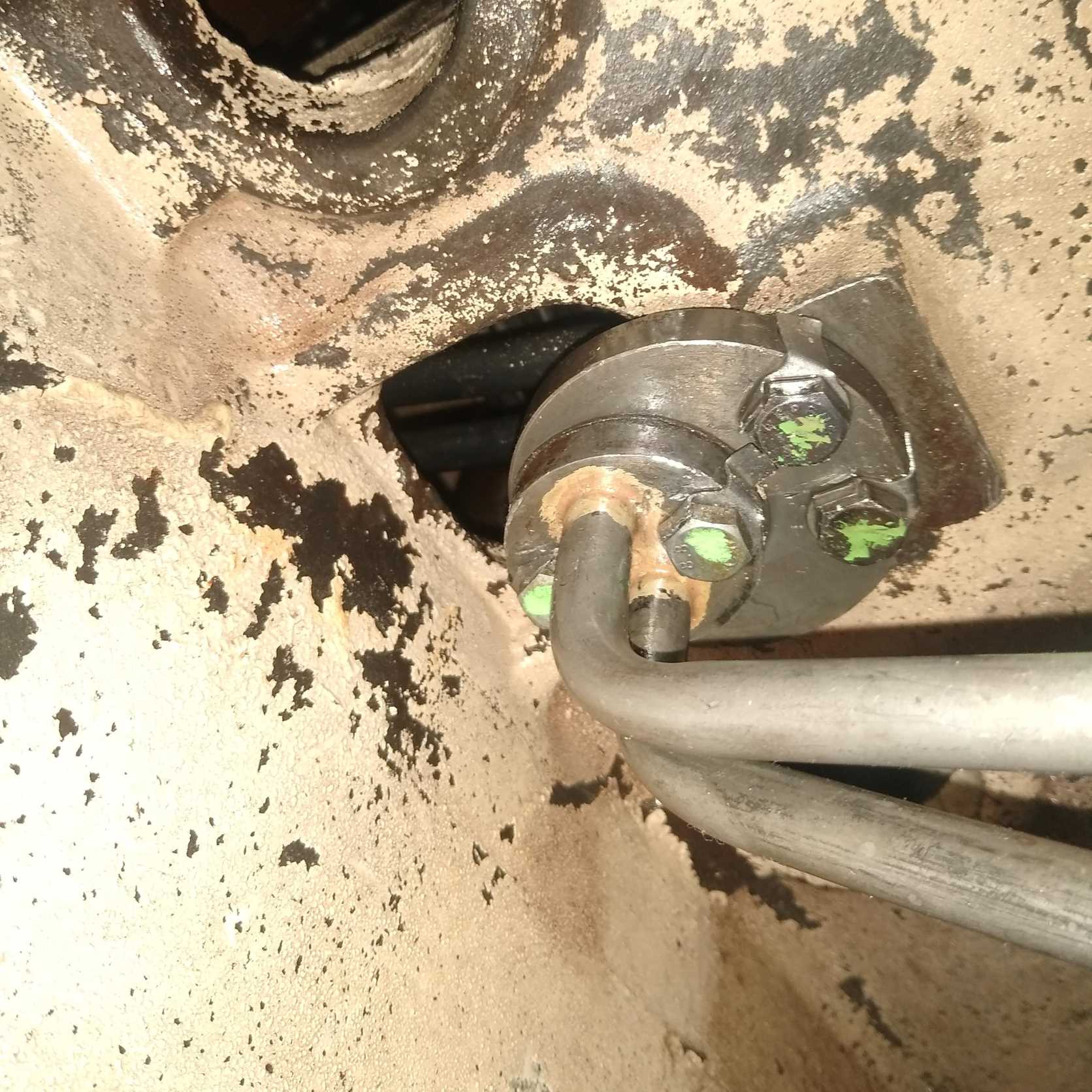
D7018 – the flange joint was the source of the suction leak affecting both pipes and the issue was addressed by re-seating the joint and tightening the bolts to a higher torque. Pictured at Williton on Tuesday 3rd December 2024 by Colin Foxhall © CC BY-NC 3.0
Class 14 ‘Teddy Bear’ D9518 – the team have been busy planning the re-installation of the cab assembly and preparing for the delivery of the special insulating gasket material that forms the interface between the cab and the frames. The component parts of the engine have now been overhauled and the next step is to steam clean the engine block and prepare for re-assembly. This requires the engine block to moved out of the loco shed, which is a bit of challenge given the presence of D1010’s bogie and Class 09 D4107 (09019) on the adjacent road in the loco shed. More on this in the next roundup !
Quality work needs to be funded, so we will continue to appeal for funds to support the work, right up to the point where the loco is completed. Any surplus will then be used to ensure her proper care and upkeep. If you like what we are doing, please help us by making a donation via our online store (click here or on the image below) or by sending a cheque to the address at the bottom of this email. THANK YOU VERY MUCH FOR YOUR SUPPORT !
Class 14 ‘Teddy Bear’ D9526 – no change – this loco is now stabled outside on Number 1 road at Williton and is likely to remain there until the new year. When space becomes available in the loco shed, she will be going ‘indoors’ for some maintenance work, which will include attention to her engine and her bodywork, to make sure that she is in good shape for the 2025 running season.
Class 47 47077 ‘NORTH STAR’ – this loco is based at Grosmont on the North Yorkshire Moors Railway and is in good running order. We hope that she will pick up some work on the Christmas specials, even if only on the empty coaching stock (ECS) movements. We look forward to a very successful 2025 running season !
Andrew Barclay 0-4-0DH 578 – this loco is fully serviceable and is stabled in the South Yard on number 2 road.
If you can help by donating your time to any of these projects, then please JOIN US and come along to the depot for an introduction to what we do and how we do it. We currently have people on site from Saturday through to Tuesday and we can open on other days if we can be sure of getting at least two volunteers on site at all times, so there is plenty of scope. We have tasks of all types to suit most capabilities, both skilled and unskilled.
Many thanks to all of our volunteers who give up so much of their time to work on the cleaning, painting, maintaining, restoring, managing and fund raising for our fleet of heritage locomotives !
BOOK REVIEW: Not a book, but a printed item nonetheless, we are pleased to be able to offer Wendy Howard’s latest creation, a WSR and DEPG-themed Christmas Card with the subtle outline of a blue-liveried diesel locomotive. This will get the speculators going, wondering if this is the ghost of Christmas past or of Christmas future. What do you think ?
This delightful card is available via our online store by clicking on the image above or by clicking on this link. MANY THANKS to Wendy for creating and donating these cards for the benefit of the DEPG !
As the year is quickly running to a close, we also need to give a final push to the sales of our 2025 DEPG calendar and to point out that stocks are limited and strictly on a first-come-first-served basis. To give a taste of what is waiting inside the calendar to adorn your walls throughout the coming year, we have put together an animation that flips through the pages. Click here or on the image below to launch the animation:
Alternatively, here is a different presentation with a thumbnail of each page brought together into a single sheet. The actual calendar has one A3 page for each month.
The DEPG 2025 CALENDAR is now available for mailing, comprising 14 printed pages of A3 (twice A4 size) glossy paper on a spiral wire binder. This calendar features the DEPG’s locomotives, both in service and in preservation, with all of the photos being so kindly provided by members and supporters. Click here or on the image above to GET YOUR COPY – WHILE STOCKS LAST – for £14 plus p&p.
ON SHED: once again we draw upon the work of Trevor Tremethick and showcase another form of motive power that was active in the West Country from the early 1960s through to the 1980s, appearing initially on passenger turns from the Midland Region and gradually covering a wide range of duties including the famous China Clay Hoods !
The photo shows 46018 (D155) standing on the former through road at Exeter St Davids station with a rake of empty clay hood wagons, while undertaking a crew change. This loco was delivered new from BR-Derby works on 16th February 1962 and was based in the midlands until moving to the Western Region in 1969, spending time at Bristol Bath Road and Cardiff Canton depots before transferring to Plymouth Laira, where she was based when this photo was taken.
Those with a head for important dates will recognise the date of this photo as the date of the ‘WESTERN TRIBUTE‘ railtour – but you will have to wait until February 2025 to get to see those photos !
Many thanks to Trevor for sharing his photo with us all.
BR-Derby ‘Peak’ 46018 (D155) was pictured standing on the through road at Exeter St Davids on Saturday 26th February 1977 while undertaking a crew change before continuing to Cornwall with the ‘down’ china clay hoods. Photo by Trevor Tremethick © CC BY-NC 3.0
DEPG NEWS – we are out of time and space this week, but we have already covered the news about the Old Goods Shed and will come back with more information as soon as we have assessed the storm damage and formulated a plan to deal with it.
The DEPG is a charity and is run entirely by volunteers, many of whom give both their time and their money to the continuance of work on the locos in the DEPG fleet. If you have been enjoying the roundup for free, have you considered joining us for just £1 a month ? You can then add your name to all of those helping out on the above projects and play your part in the future of our locos for a lot less than the price of a cup of coffee!
JOIN US using whichever membership class is appropriate for your situation and means. CLICK HERE or on the image below or use the QR code to get the details.
If you would like to go one step further and come along to help with the work on the locos in our fleet, then please use our CONTACT FORM to let us know that you would like to volunteer and we will respond with more details.
We look forward to hearing from you !








